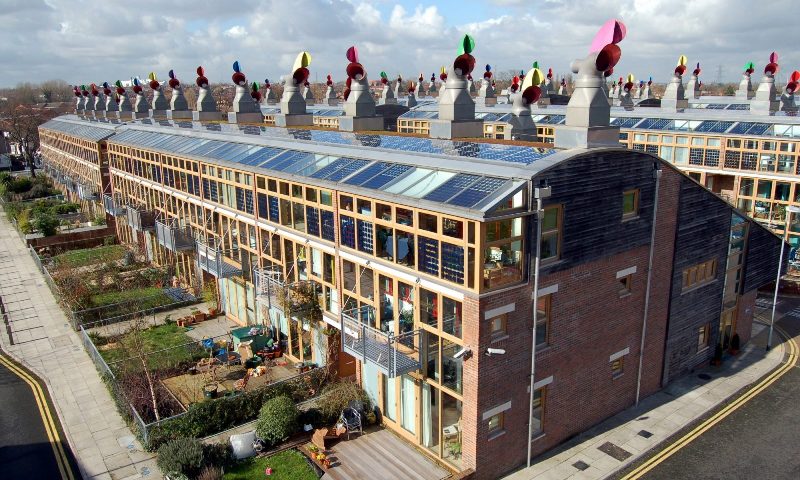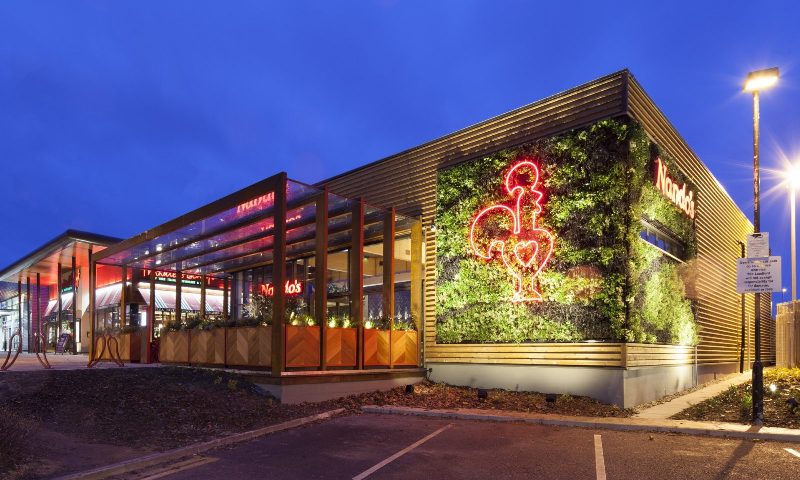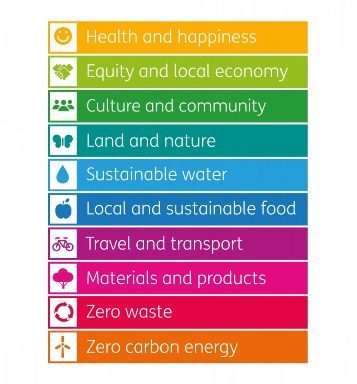Mike Scott reports on how Bioregional's One Planet Living Framework is helping developers create homes and businesses focused on well-being as well as lower energy bills
While the built environment’s environmental impacts are well-known and it is vital that they are tackled, sustainable building is about more than just the environment. If you want people to live more sustainably, you have to provide them with homes and workplaces that not only help them to do that, but that they want to work and live in too.
Bioregional, a UK-based social enterprise, believes that the key to sustainable buildings is making it easier for those who use them to live sustainably, a concept it calls One Planet Living.
One Planet Living looks at the people in the community and asking how we can help them live high-quality and low-impact lifestyles
In a world where cities such as Jakarta and Mexico City are sinking because of groundwater abstraction, where energy demand in Buenos Aires is set to grow by 50% in the next decade, where Lagos has 17 million fewer homes than it needs, and millions of people around the world die every year from air pollution, living sustainably is not just a luxury for western economies, but essential for the future of cities around the world.
“Our vision of One Planet Living includes creating homes that are simple and low-cost to run, with accessible public transport and a strong sense of community,” Bioregional says.
Using experience gained developing the ground-breaking BedZED eco-village in South London, it has developed the One Planet Living framework, which has 10 principles, ranging from health and happiness to zero carbon energy.

“One Planet Living is user-focused, looking at the people who are living and working in the community and asking how we can help them live high-quality and low-impact lifestyles,” says Anthony Probert, sustainable places programme manager at Bioregional.
“Other developers look to planning legislation and building regulations when they develop their proposals,” he adds. “They just stick to what they know and they don’t focus on the end user and how they can improve their lives – they just look at how they can get planning permission. And if you do that, you just get bog-standard developments.”
BedZED, the UK’s first large-scale, mixed-use sustainable community, was completed in 2002 and comprises 100 homes, office space, a college and community facilities. Bioregional still has its headquarters at the zero-carbon development, which offers residents significant energy savings, lower bills and abundant green space.
We’re borrowing from future generations and we need to lower our impact
The scheme used local and reclaimed materials, is heated by a biomass boiler and includes solar panels and energy-efficient and water-saving appliances. BedZED also pioneered car clubs, an idea that has now spread to towns and cities across the UK.
Bioregional has helped companies, including restaurant chain Nando’s, retailers M&S and Kingfisher, and drinks producer Innocent, to make their operations more sustainable. It has also helped to create sustainable developments and buildings in South Africa (a lodge in a safari park), Australia and Finland.
In the latter it advised on the construction of two near zero-carbon developments that will be home to 15,000 people and provide 8,000 jobs. They include innovations such as central waste-collection chutes, cycling ring roads, green roofs and energy needs met by solar panels and waste heat generated by commercial refrigeration.
In the UK, Elmsbrook, a One Planet Living community in Bicester, opened by A2Dominion in 2016, was recently confirmed as the UK's first large-scale zero-carbon development.
According to Bioregional’s monitoring results, Elmsbrook residents used 57% less heating and hot water than their neighbours and 28% less electricity, saving £400 in annual energy bills.

International consulting engineers Cundall is one company that has embraced the concept of One Planet Living. “We signed up in 2012, initially because we wanted to look at our corporate social responsibility,” says Simon Wyatt, sustainability partner for the group. “We’re borrowing from future generations and we need to lower our impact.”
But the company has also been focused on the health and wellbeing aspects of its projects for a number of years. “We’ve been looking at how to improve the experience for our people. It leads to happier workers and helps with staff retention. You have to do more than just subsidise gym membership.”
There is very little creativity out there when it comes to sustainability. People are looking for an alternative
One study found that morale was 55% better in companies with strong sustainability programmes, compared with those with poor ones, and employee loyalty was 38% better, according to Bioregional. Other benefits include reducing costs, boosting your brand, attracting investors, fostering innovation and improving risk management, it adds, as well as future-proofing your business against the requirements of keeping average temperature rises to 1.5C as recommended by the Intergovernmental Panel on Climate Change.
“We’ve used this approach with a number of clients; there is a growing recognition in the industry that it is something worth considering,” Wyatt says.
The 10 One Planet Living principles are often interlinked, as Cundall discovered when it tested the water supply in one of its offices and found elevated levels of nickel and styrene. “You take it for granted that your water supply is of good quality, but the nickel levels were caused by corroded pipework, while the styrene comes from insulation material around the pipes that gets in through small cracks,” says Wyatt. “But the quality of water ties in to ‘health and happiness’, as well as ‘sustainable water’ and ‘materials and products’.”
 The 10 One Planet Living principles. (Credit: Bioregional)
The 10 One Planet Living principles. (Credit: Bioregional)
Cundall has also focused on indoor environmental monitoring, looking at the concentration of CO2 and volatile organic compounds (VOCs) in its buildings. “There’s a big focus on outdoor air quality, which kills 11,000 people a year. But indoor air quality kills three times as many people. High levels of CO2 impair cognitive performance and it can cost companies thousands of pounds. As people become more aware of it, they want to ensure they have the best quality indoor air quality.”
One Planet Living is starting to gain significant traction, says Probert, with the principles applied to $30bn of developments. “There is very little creativity out there when it comes to sustainability. People are looking for an alternative. As One Planet communities are developed, you see growing interest from local authorities in spreading the ideas further. We realised when we started that we had to make fantastic places to live because if we didn’t, we wouldn’t get the results we wanted. We put a lot of work into place-making design to enable great community infrastructure. And we have some fantastic results to back it up.”
Mike Scott is a former Financial Times journalist who is now a freelance writer specializing in business and sustainability. He has written for The Guardian, the Daily Telegraph, The Times, Forbes, Fortune and Bloomberg.
This article is part the in-depth Built Environment Briefing. See also:
22 cities at vanguard of global drive to cut climate impact of buildings
Why the buildings sector needs a LED light bulb moment
Salesforce thinks big to cut its water impact
Singapore leads way as Asia’s developers wake up to climate risk
Building sector takes concrete steps to address ‘hidden’ emissions
Getting to the bottom of the green buildings conundrum
Leading companies partner with London in zero-carbon push
The design standard with people at its heart
BedZED Cundall Bioregional One Planet Living

